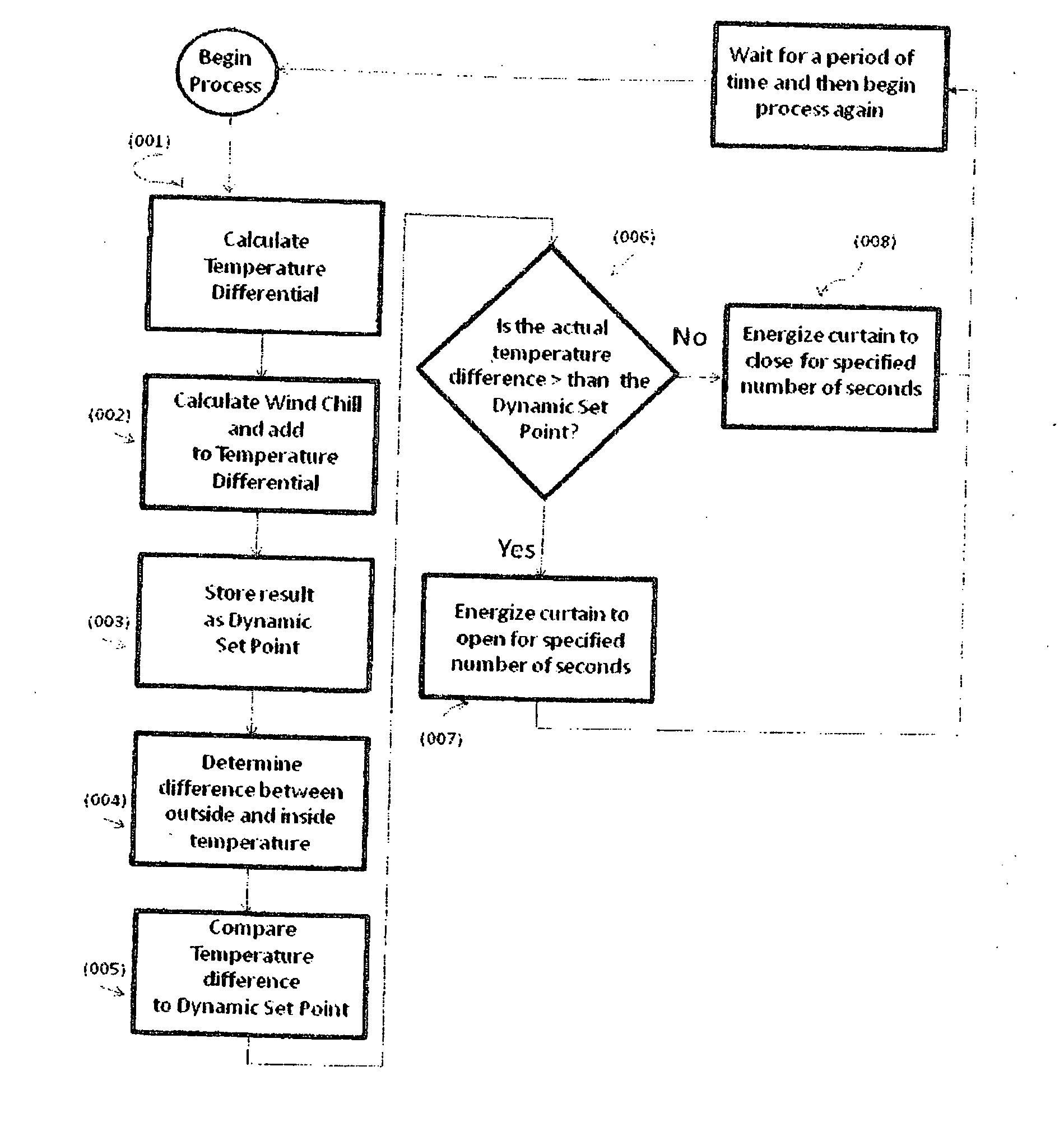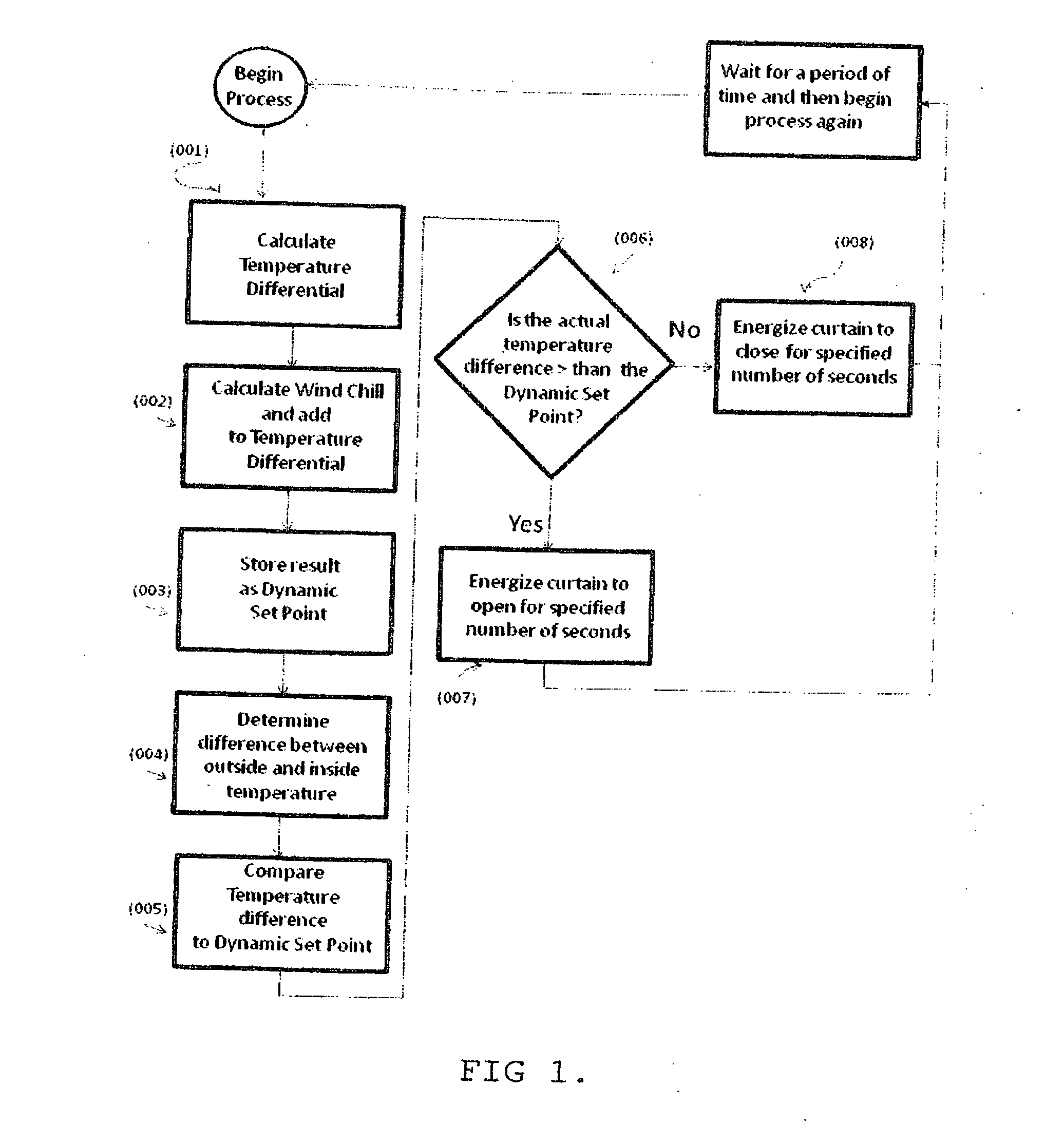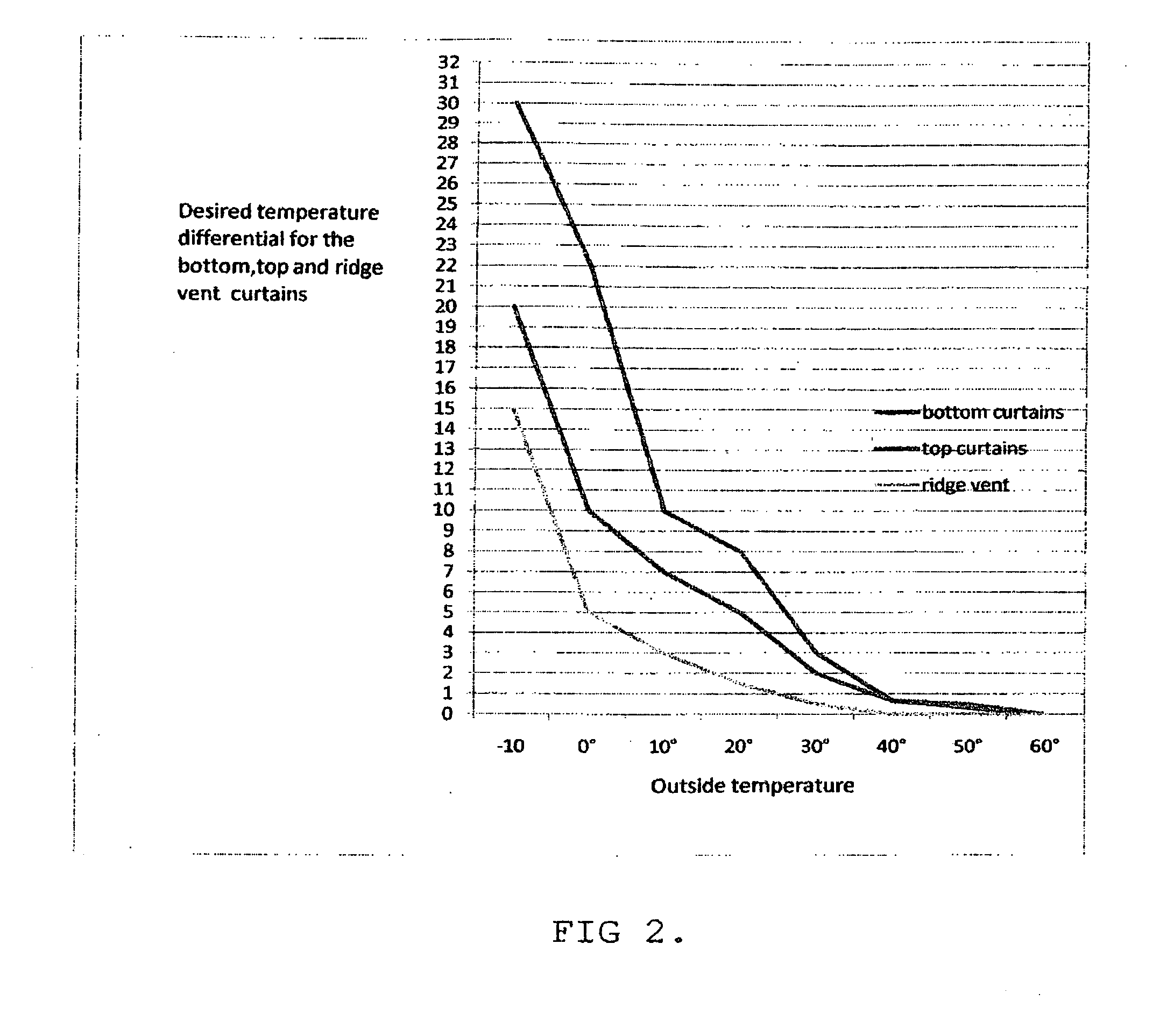Method for controlling environmental conditions of livestock based upon the dynamics between temperature and wind chill
a technology of dynamic dynamics and environmental conditions, applied in the field of controlling environmental conditions of livestock based upon the dynamic between temperature and wind chill, can solve the problems of affecting estrous behavior, conception rate, lactation rate of dairy cattle, and altering the maintenance energy requirement of livestock,
- Summary
- Abstract
- Description
- Claims
- Application Information
AI Technical Summary
Benefits of technology
Problems solved by technology
Method used
Image
Examples
Embodiment Construction
[0019]Turning now to the detailed description of the invention, the method to dynamically open or close building / enclosure curtains in response to actual inside and outside temperatures, wind chill, and wind velocity in commercial animal enclosures.
[0020]The following detailed explanation is divided by the steps in the process to dynamically control the curtains in the building / enclosure.
[0021]Refer to FIG. 1, “Curtain Temperature Logic” flowchart. FIG. 1 is a flowchart that shows the steps in determining how much building / enclosure curtains will be dynamically opened or closed in response to changes in the internal and external environment. FIG. 1 will be used extensively in the following explanation.
Step 1—Calculating the Temperature Differential
[0022]Refer again to FIG. 1. The first step (001) in curtain temperature logic is to calculate the “temperature differential.” A thermometer inside the building / enclosure registers the internal temperature and relays that datum to the cont...
PUM
 Login to View More
Login to View More Abstract
Description
Claims
Application Information
 Login to View More
Login to View More - R&D
- Intellectual Property
- Life Sciences
- Materials
- Tech Scout
- Unparalleled Data Quality
- Higher Quality Content
- 60% Fewer Hallucinations
Browse by: Latest US Patents, China's latest patents, Technical Efficacy Thesaurus, Application Domain, Technology Topic, Popular Technical Reports.
© 2025 PatSnap. All rights reserved.Legal|Privacy policy|Modern Slavery Act Transparency Statement|Sitemap|About US| Contact US: help@patsnap.com



